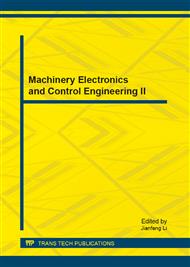p.121
p.126
p.131
p.135
p.140
p.148
p.157
p.164
p.169
Exciton Dissociation at Indium Tin Oxide/Indium Doped Zinc Phthalocyanine Interface
Abstract:
A new intercalation of Indium and zinc phthalocyanine(ZnPc) thin film is developed by using thermal co-evaporation technique. The exciton dissociation at the interface of Indium Tin Oxide(ITO) electrode and Indium doped ZnPc upon laser irradiation is observed through the transient photovoltage measurement technique in comparison with the interfacial exciton dissociation occurred at ITO/pristine ZnPc interface. The occurring transient photovoltage spike is regarded as the effect of exciton dissociation at ITO/In-doped ZnPc interface and depends on the amount of free carrier separation by built-in field or charge carrier concentration according to doping ratio. The experiments demonstrate the existence of exciton dissociation at ITO/In-doped ZnPc interface, the direction of charges transfer is that holes are injected to ITO, whereas electrons are left in bulk film. A thin insulating layer of 6 nm thick lithium fluoride(LiF) is inserted between ITO and In-doped ZnPc to prevent the exciton dissociation at ITO/In-doped ZnPc interface and insist on the phenomenon of interfacial exciton dissociation. Further photoelectron spectroscopy experiments prove that In-doped ZnPc is hole transport material.
Info:
Periodical:
Pages:
140-147
Citation:
Online since:
March 2013
Price:
Сopyright:
© 2013 Trans Tech Publications Ltd. All Rights Reserved
Share:
Citation:


